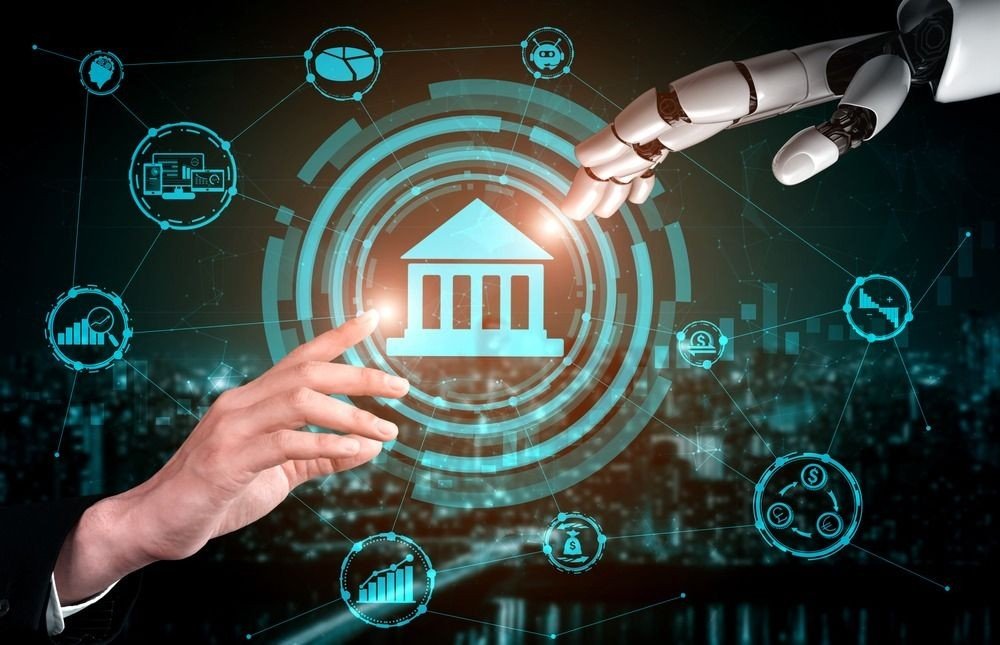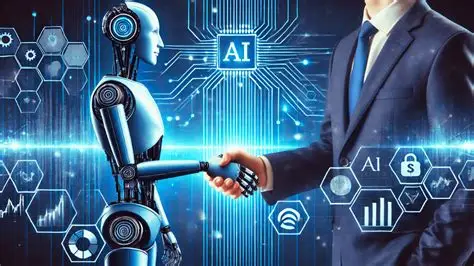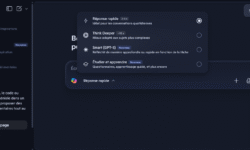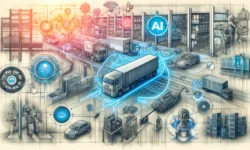AI and Banking in 2025: The Complete Transformation of Financial Services
The AI-Powered Bank: No Longer a Future Concept
The year 2025 marks a pivotal moment for the global banking industry. What began as incremental adoption of automation and basic algorithms has exploded into a full-scale integration of Artificial Intelligence (AI) into the very core of financial services. We have moved beyond simple chatbots and fraud alerts; we are now in the era of hyper-personalization, predictive analytics, and autonomous finance.
Banks are no longer just financial institutions; they are becoming AI-driven tech companies that offer financial products. This transformation is reshaping customer expectations, operational models, and competitive landscapes. This article provides a comprehensive analysis of the key trends, real-world applications, and future implications of AI in banking in 2025.

1. Hyper-Personalization: The End of One-Size-Fits-All Banking
In 2025, generic marketing and standardized product offerings are obsolete. AI enables a degree of personalization that was previously unimaginable.
AI-Powered Wealth Management
Robo-advisors have evolved into AI wealth partners. Platforms like Morgan Stanley's AI @ Morgan Stanley use machine learning to analyze a client's entire financial life—spending habits, risk tolerance, life goals (e.g., buying a home, saving for college)—to provide dynamic, real-time investment advice that adjusts to market conditions and personal circumstances.
Contextual and Proactive Product Offers
Instead of blasting customers with credit card offers, AI systems analyze transaction data in real-time. For example, if a customer's spending patterns indicate they are planning a wedding, the system can proactively offer a tailored loan with a competitive rate at the exact moment it is most relevant, dramatically increasing conversion rates and customer satisfaction. McKinsey highlights this contextual engagement as a key driver of growth.
2. Autonomous Fraud Detection and Prevention
Fraud has become more sophisticated, and so have the defenses. Rule-based systems are being replaced by self-learning AI networks that operate in real-time.
Real-Time Behavioral Biometrics
AI doesn't just look at what you buy; it analyzes *how* you bank. It learns your typical typing speed, mouse movements, and even how you hold your phone. JPMorgan Chase invests billions in AI to create these behavioral profiles, making it incredibly difficult for fraudsters to impersonate legitimate customers, even with stolen credentials. JPMorgan Chase's AI research is at the forefront of this technology.
Network Pattern Analysis
AI systems from companies like Featurespace analyze transactions across their entire network to identify complex fraud rings. If a new account shows transaction patterns similar to a known fraudulent network, it can be flagged before any actual fraud occurs, moving from prevention to pre-emption.

3. Generative AI: Revolutionizing Customer Service and Content
Generative AI, powered by large language models (LLMs), is moving beyond simple chatbots to become a comprehensive customer service and operational tool.
Advanced AI Agents and Copilots
Banks like Bank of America employ sophisticated AI agents like Erica, which now handles tens of millions of user requests. In 2025, these agents can understand complex, multi-step requests like, "Review my spending from last month, find any subscriptions I forgot about, and help me set up a savings goal for a new laptop."
Internal Knowledge and Code Generation
Generative AI is also transforming back-office operations. Goldman Sachs uses generative AI to help its developers write code and its analysts draft research reports more efficiently, parsing through thousands of pages of regulatory documents in seconds. Goldman Sachs recognizes generative AI as a fundamental shift for the knowledge economy.
4. Predictive Risk Management and Credit Scoring
AI is enabling a more nuanced and fair assessment of creditworthiness, expanding access to financial services.
Alternative Data Analysis
Traditional credit scores are being supplemented with AI models that analyze alternative data—such as cash flow patterns, rental payment history, and even educational background (where legally permissible)—to build a more holistic picture of a borrower's reliability. This allows lenders to safely serve segments of the population previously considered "unbankable."
Macro-Economic Stress Testing
Regulatory bodies like the Federal Reserve are actively studying AI's role in credit markets. Banks now use AI to run millions of complex simulations to predict how their portfolios would perform under various economic scenarios (e.g., rapid inflation, housing market crashes), making the entire financial system more resilient.
Challenges and Ethical Considerations in AI Banking
This rapid adoption is not without its significant challenges.
Algorithmic Bias and Fairness
The risk of AI perpetuating or even amplifying existing biases in historical data is a primary concern. Regulators are focusing on ensuring Explainable AI (XAI) in banking. The European Central Bank (ECB) is actively developing guidelines for the ethical and transparent use of AI, demanding that banks be able to explain why a loan was denied by an AI model.
Data Privacy and Security
The immense amount of sensitive data required to fuel these AI systems makes banks prime targets for cyberattacks. Ensuring robust data encryption and strict governance frameworks is paramount.
The Human Touch
The goal in 2025 is not to replace humans but to augment them. The most effective banks are those that use AI to handle routine tasks, freeing up human advisors to deal with complex, emotional, or high-value customer interactions that require empathy and sophisticated judgment.
The Future: Towards Autonomous Finance
Looking beyond 2025, the trajectory points toward fully autonomous finance. We are moving towards a world where AI agents will manage our entire financial lives proactively:
- An AI agent could automatically switch your savings to the highest-yielding account, manage your investment portfolio, and pay your bills optimally based on cash flow.
- It could negotiate bills on your behalf, such as your cable or insurance, to secure the best possible rates.
- This "set-and-forget" model of finance will require unprecedented levels of trust, security, and regulatory clarity.
Conclusion: Adaptation is Key
The integration of AI in banking in 2025 is a story of profound transformation. It is creating a more efficient, secure, and personalized financial ecosystem. However, success is not guaranteed. Banks must navigate the tightrope of innovation and regulation, prioritize ethical AI development, and remember that technology should enhance, not erase, the human element of trust that remains the foundation of finance. The institutions that thrive will be those that embrace AI not just as a tool, but as a core component of their strategy to serve the customer of the future.





I’m impressed, I need to say. Really rarely do I encounter a weblog that’s both educative and entertaining, and let me tell you, you’ve hit the nail on the head. Your concept is outstanding; the problem is something that not enough persons are talking intelligently about. I am very comfortable that I stumbled throughout this in my seek for something relating to this.